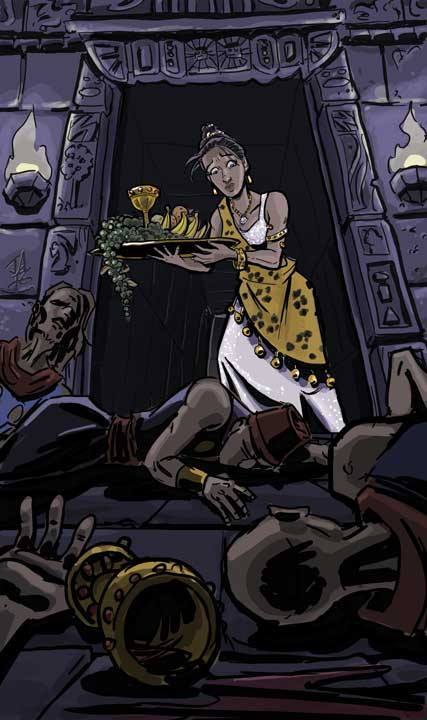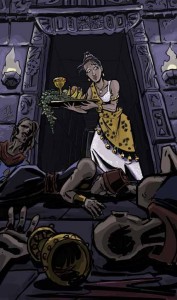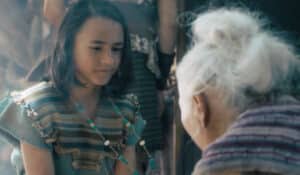I know it doesn’t seem like it sometimes, but at its heart, Mormonism is quite a radical religion. It’s based on the idea that in order to progress we need to be constantly creating new thought spaces; constantly breaking through our assumptions in pursuit of the next level of understanding.
Take, for example, Joseph Smith. He produced a boundary-breaking book showing what would happen if Judaism were transplanted to a different continent and how God would interact with those people. Talk about a new thought space. It turned out to be an effective one, too. The Book of Mormon is pretty famous for helping people think anew and act anew.
But, Mormonism didn’t stop there. The pioneers journeyed to the Great Salt Lake, claiming a literal space to put their new ideas to the test. Then LDS universities were established to help bring Mormonism into conversation with the larger world. And, of course, Mormonism has expanded from the confines of Utah, spreading over the United States and the rest of the world, continually being influenced by other thought spaces.
It seems to me that one of the most important things we can do is to continue to build new thought spaces so that our descendants and Mormonism can continue to evolve. Certainly we have been the beneficiaries of many such new spaces, for example, blacks receiving the priesthood and females being integrated into leadership councils.
We don’t want to become trapped inside a space where we can only produce variations on a single formula. Hearing the same story over and over again stunts the imagination, deadening our creativity until we find that we have become mere consumers instead of creators. And if there’s one thing Mormon doctrine tells us, it’s that we are born to become creators.
In my own small way, I’ve been trying to create a new possibility space within Mormonism by writing a Book of Mormon comic book called iPlates (the name being a modern-day riff on the Golden Plates).
A comic book may seem a strange medium for a new thought space, but I’m optimistic. Comics haven’t been explored much in Mormonism and they offer some very interesting possibilities.
For example, a comic book’s penchant for focusing on the moment-to-moment narrative can allow us to dive into a story that may only take a few pages (or verses) in the Book of Mormon and expand it—fleshing out characters and exploring motivations. For example in iPlates: Volume I, we integrated Abinadi into the story of King Noah, making him a kind of uncle to the young Noah—even saving his life at one point. This extra layer of relationship made Abinadi’s trial before King Noah take on additional meaning and emotion.
But the possibility space I’m most excited about will appear in the upcoming iPlates: Volume II, where we will introduce two female protagonists.
The story takes place as Alma (having just escaped King Noah) is gathering converts in the wilderness. Sybil, who had served in King Noah’s court while Alma was a priest, joins the group and becomes a very strong influence. But the king is keeping close tabs on her.
Then, inside the city, Zerin takes care of her aging mother, unaware that a Lamanite army is about to launch an attack on the city. Before the story ends, she will find herself leading a group of refugees—and becoming the only thing that stands between them and slaughter.
Creating and integrating females into a Book of Mormon-based story was quite a challenging, but very rewarding, experience. (I wrote a little about the process here.) I was pleased with how much more deeply I could explore Book of Mormon themes, and how much more nuance could be added to them, when I got to use both male and female characters.
This is the new thought space I’m hoping to hand down to the next generation: a way to imagine the feminine as well as the masculine in the Book of Mormon.
Help make iPlates: Volume II a reality. Contribute to the Kickstarter campaign, which continues through December 6, 2013.







3 Responses
One of my favorite things about Mormonism is how we can study the scriptures and find imaginative ways to liken them to our own lives. Thanks for this post, Stephen!
This reminds me of midrash — if scripture doesn’t give us satisfying women figures, then let’s write them in ourselves. I absolutely love the idea, and I would definitely buy the comic book. It hurts every time I see my children reading the the BOM illustrated book, knowing that they are reading about next to no meaningful female figures.
” And if there’s one thing Mormon doctrine tells us, it’s that we are born to become creators.” AMEN!
iPlates is on my Christmas list!